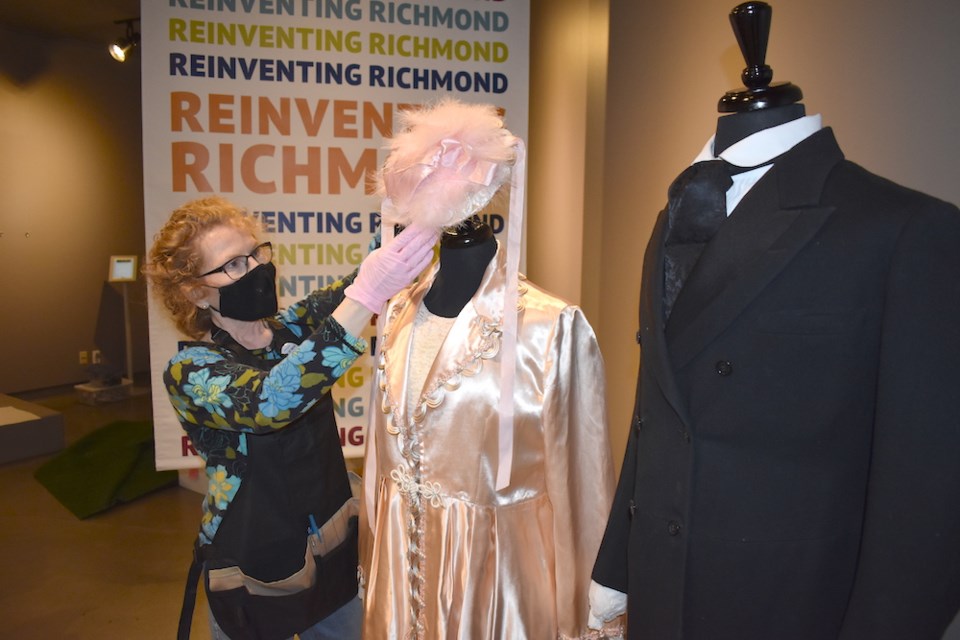Curbside pickup was a thing in Steveston 120 years before the COVID-19 pandemic as one enterprising store owner delivered groceries – based on pre-orders – to fishermen straight to their boats.
Ling Chung Lam’s store, the Hong Wo General Store, was at the foot of Trites Road on the river. He had two entrances to his store – one for the walk-in traffic and one for the boats.
For the fishermen, he’d have lists of items that they could just tick off to make sure they were stocked up for their long fishing expeditions and staff at the store would collect the items and take the groceries down to the boats.
“It was so clever because he just created these lists so they could just take it on the boat – talk about making his business thrive,” explained Sheila Hill, exhibit and program coordinator at the Richmond Museum.
Lam was fluent in English and Chinese and also worked as a translator, contractor and labour organizer in the fishing industry.
His store finally closed in 1971 after being in business for more than 70 years.
This is one of the stories represented at a new exhibition – opening Saturday – at the Richmond Cultural Centre, titled “Reinventing Richmond.”
On the same wall where the Hong Wo General Store sign hangs, there’s a sign for an “Electric steam massage,” something that is still a mystery for museum staff who have been trying to figure out what this contraption was.
“It sounds terribly dangerous,” Hill said. “We’ve been trying to find out what it is and we’re not entirely sure, but we’re thinking it had something to do with the many bordellos and things they had in town.”
The focus of Reinventing Richmond is of the incorporated township including the history of fishing, farming, industry, retail and home life with a focus on the long-time multicultural nature of the city, Hill explained.
Richmond is known today as a home to people from around the world, but, Hill said, it has always attracted people from different ethnic backgrounds.
The fishing industry in Steveston had Indigenous, Japanese, Chinese and European people working in the 41 canneries side by side – albeit all living in their segregated quarters.
“People know Richmond is a very diverse place today, but what would surprise them if they look back a hundred years ago, they would see the same diversity,” Hill said. “And they would see how much things have changed but how much it’s stayed the same.”
In fact, Steveston was such a growing townsite, it almost eclipsed Vancouver.
“At the turn of the 20th century, they thought Steveston would overtake Vancouver,” Hill said. “It really had that presence.”
Actress Lulu Sweet leaves her mark
One display at the new exhibit features mannequins wearing the clothes of Lulu Sweet and Col. Richard Moody.
The story is that Moody was taking Sweet on a ship sailing past what would come to be known as Richmond and she asked the name of the island.
Moody, maybe under the spell of the San Francisco actress, said he would name the island after her – hence, Lulu Island.
Moody – for whom Port Moody is named after – was the commander of the Royal Engineers in 1858, who mapped a lot of British Columbia. He later become the Lieutenant-Governor of the Crown Colony of B.C.
“The embellishments grew in the telling, but the island is definitely named after Lulu Sweet,” Hill said.
One display at the new historical exhibit shows a saddle, owned by “Cousin Gill” and used by his jockey at the Lansdowne racetrack.
Cousin Gill - P.S. Gill - came to be known by that moniker when a group was denied entry into a beer parlour in Victoria since one of the group was Indigenous. But Gill instructed the Indigenous person to say he was his cousin and the whole group was then allowed in.
At the racetracks, he then came to be known as “Cousin Gill.”
Gill was one of the first South Asians to own, train and breed thoroughbred horses. He trained his horses at the Brighouse Racetrack in Richmond in the 1950s and he raced at Lansdowne Park in Richmond, Hastings Park in Vancouver and Sandown Park in Victoria.
Hill said Richmond residents have a real sense of identity with pockets of neighbourhoods they identify with – like Steveston, Finn Slough, Terra Nova and Sea Island.
Furthermore, Richmond has had many slogans over the years, including Child of the Fraser, Salmonopolis as well as Island City, By Nature. The museum exhibit has an area where visitors can write what they would like Richmond’s slogan of the future to be.
“I would love people to have a little deeper understanding of where Richmond has come from but also think about where we want to go,” Hill said. “Because what you’ll see (at the exhibit), some of these themes continue through time but others are new and layer on top and others drop away. So, what do we have today that we’d like to keep and what would we like to build for tomorrow?”
The exhibit opens to the public Saturday, Sept. 25 at 10 a.m. in conjunction with Culture Days activities taking place at the Richmond Cultural Centre.
Reinventing Richmond runs for almost a year, closing on Sept. 5, 2022.
The Richmond Museum is at 7700 Minoru Gate, in the Richmond Cultural Centre.
Operating hours are 9 a.m. to 9 p.m. weekdays and 10 a.m. to 5 p.m. weekends.
Visitors are asked to follow COVID-19 safety protocols including wearing a mask and maintaining social distance from other guests. Admission is by donation.
For more information about the Richmond Museum, go to www.richmonmuseum.ca.
For more information about Richmond Culture Days, visit www.richmond.ca/culturedays.



